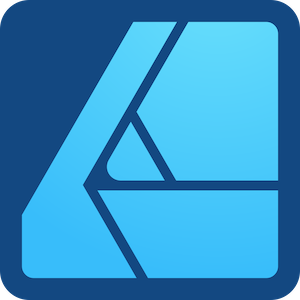Graphic design software is essential for creating visual content, ranging from digital illustrations to web designs and print materials.
With numerous options available, it can be challenging to determine which software is best suited for your needs.
This article explores some of the most popular graphic design software, detailing their creators, standout features, ease of use, strengths, weaknesses, and more.
Adobe Photoshop
![]()
Manufacturer: Adobe Inc.
Other Products: Adobe Illustrator, Adobe InDesign, Adobe Premiere Pro, Adobe After Effects
Why They Made It: Adobe Photoshop was initially created to provide professional photo editing capabilities. Over the years, it has evolved into a comprehensive graphic design tool used by professionals across various industries.
Standout Features: Photoshop is renowned for its robust set of tools for photo editing, digital painting, and graphic design. It includes features such as layers, masks, and filters, which provide immense flexibility and creative control.
Ease of Use: While Photoshop offers a steep learning curve due to its extensive features, Adobe provides ample tutorials and resources to help users get started.
Main Strength: Photoshop’s main strength lies in its versatility. It is used for everything from photo retouching and manipulation to creating complex digital artwork and web design elements.
Weakness: The complexity and breadth of tools can be overwhelming for beginners. Additionally, Photoshop is relatively expensive compared to other graphic design software.
Adobe Illustrator

Manufacturer: Adobe Inc.
Other Products: Adobe Photoshop, Adobe InDesign, Adobe Premiere Pro, Adobe After Effects
Why They Made It: Adobe Illustrator was created to provide a vector-based design tool, offering precise control over artwork for both print and digital media.
Standout Features: Illustrator excels in creating scalable vector graphics, logos, icons, and illustrations. Key features include the Pen tool, Pathfinder tool, and an extensive library of brushes and effects.
Ease of Use: Illustrator is user-friendly for those familiar with vector graphics, but like Photoshop, it has a learning curve. Adobe’s tutorials and community support help ease the process.
Main Strength: Illustrator’s ability to create vector graphics that can be scaled to any size without losing quality is its biggest advantage.
Weakness: Similar to Photoshop, Illustrator can be costly, and the range of features might be overwhelming for beginners.
CorelDRAW

Manufacturer: Corel Corporation
Other Products: Corel Painter, Corel PaintShop Pro, Corel VideoStudio
Why They Made It: CorelDRAW was developed to offer an alternative to Adobe’s suite, focusing on vector graphic design with a user-friendly interface.
Standout Features: CorelDRAW is known for its intuitive interface and powerful vector illustration tools. It includes features like advanced typography, page layout, and color management.
Ease of Use: CorelDRAW is praised for its user-friendly design, making it more accessible to beginners compared to Adobe’s offerings.
Main Strength: Its ease of use and powerful vector editing capabilities make it a favorite among graphic designers, especially for creating logos, brochures, and various print materials.
Weakness: CorelDRAW may lack some advanced features found in Adobe Illustrator, and its compatibility with certain file formats can be limited.
Affinity Designer

Manufacturer: Serif
Other Products: Affinity Photo, Affinity Publisher
Why They Made It: Serif created Affinity Designer to provide a high-performance, affordable alternative to Adobe’s graphic design software.
Standout Features: Affinity Designer boasts a smooth and intuitive user interface with powerful vector and raster design tools. It offers real-time performance, unlimited artboards, and advanced grid systems.
Ease of Use: Affinity Designer is known for its user-friendly interface, making it accessible to both beginners and professionals.
Main Strength: Its main strength is the seamless integration of vector and raster tools, providing flexibility for various design tasks.
Weakness: While it is feature-rich, some advanced tools found in Adobe’s software are missing, which may be a limitation for certain professionals.
Sketch

Manufacturer: Sketch B.V.
Other Products: None (solely focused on Sketch)
Why They Made It: Sketch was created specifically for digital design, focusing on UI/UX design for websites and mobile applications.
Standout Features: Sketch offers a minimalist interface with powerful vector editing tools, symbols, and prototyping capabilities. It also supports a wide range of plugins for extended functionality.
Ease of Use: Sketch is designed to be straightforward and easy to use, particularly for those familiar with UI/UX design principles.
Main Strength: Its main strength is its focus on UI/UX design, providing tools tailored to the needs of web and mobile designers.
Weakness: Sketch is available only for macOS, limiting its accessibility to Windows users.
Inkscape

Manufacturer: Open Source (Inkscape Community)
Other Products: None (solely focused on Inkscape)
Why They Made It: Inkscape was developed as a free, open-source alternative to professional vector graphic design software.
Standout Features: Inkscape offers a comprehensive set of vector editing tools, including path operations, node editing, and support for various file formats.
Ease of Use: While Inkscape provides a powerful toolset, its user interface can be less intuitive compared to commercial software. However, being open-source, it has a supportive community and extensive documentation.
Main Strength: Its main strength is being a free, open-source alternative, making professional vector design accessible to everyone.
Weakness: The interface can be less polished, and it may lack some advanced features found in paid software.
Conclusion
Choosing the right graphic design software depends on your specific needs and preferences.
Adobe Photoshop and Illustrator remain industry standards due to their comprehensive feature sets and professional support.
CorelDRAW and Affinity Designer offer powerful alternatives with user-friendly interfaces and unique strengths.
Sketch stands out for UI/UX design, while Inkscape provides a robust, free option for vector graphic design.
Each software has its strengths and weaknesses, so it’s essential to consider what features and capabilities are most important for your projects.

